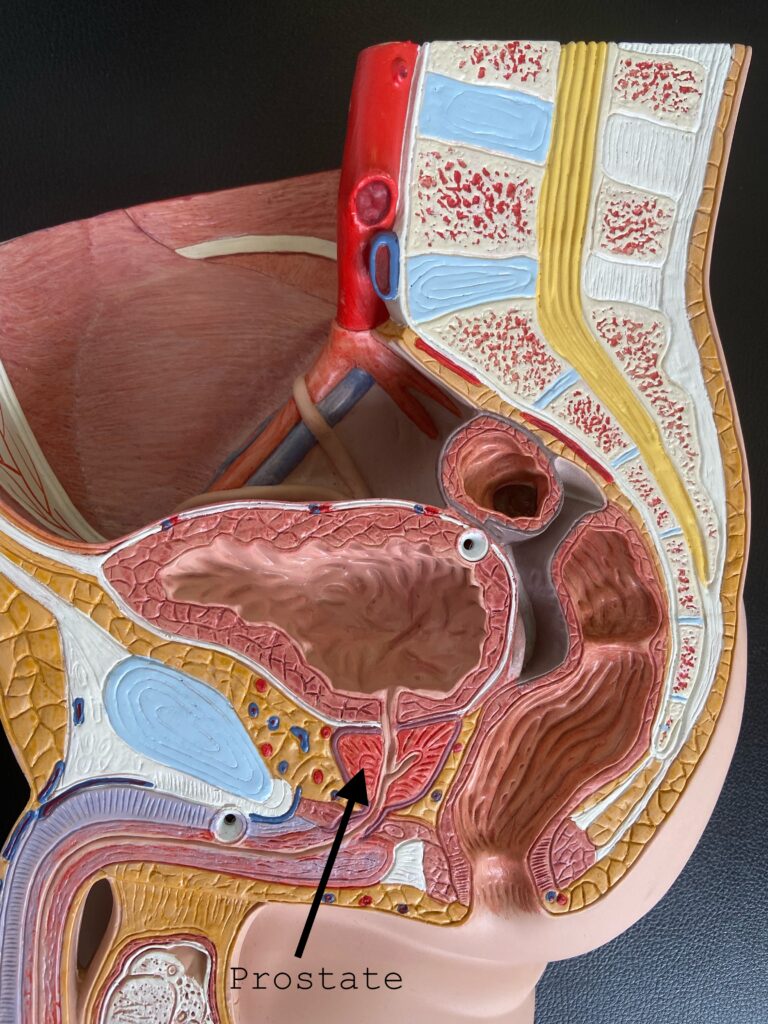This is one of a two-part post to help you better understand if the symptoms you are feeling may be the prostate (or not), and how pelvic physical therapy can help both!
Part 1: When ARE symptoms your prostate?
Part 2: When symptoms are NOT the prostate (stay tuned!)
If you have, or know someone with a prostate – keep reading!
Part 1:
What is the prostate?

The prostate is a gland located just below the bladder, around the urethra. It sits between the bladder and the pelvic floor, and is about the size of a walnut. Part of it is gland and part is muscle. The glandular portion helps to produce components of semen, and the muscular part helps to propel them during ejaculation. Prostate health is important for bladder and sexual function. General symptoms of prostate dysfunction include trouble starting the flow of urine, a weak stream, difficulty fully emptying your bladder, burning with urination, frequency of urination, pain with erection or ejaculation, erectile dysfunction, and pain in the hips, back, or pelvis. If you have any of these symptoms, you should discuss them with your doctor, and then (of course) see a Physical Therapist who specializes in pelvic health.
Prostate Enargement:
1 in 10 cis men will experience prostate enlargement (benign prostatic hyperplasia). Due to the proximity of the prostate and urethra, it often results in urinary symptoms such as difficulty starting the stream of urine, weak stream, or feeling you don’t fully empty.
Prostatitis:
Another common condition, prostatitis, can present in different ways, sometimes similar to enlargement True prostatitis can be caused by a bacterial infection. But you can have persistent symptoms of prostatitis with no infection involved (read part 2).
Prostate cancer:
There are many conditions that can affect the prostate, and they usually begin after age 50. 1 in 5 cis men will be diagnosed with prostate cancer. Most types have a very high survival rate, with treatments including removal of the prostate (prostatectomy), radiation, or chemotherapy. New methods and medications are always being developed. Following treatment for prostate cancer, especially with prostatectomy, many people experience urinary leaks, pelvic pain, and sexual dysfunction.
What helps?
Pelvic physical therapy is a great option to help you manage symptoms surrounding prostate dysfunction. We can answer any questions you have and help figure out what may be contributing, and what to do about it. If you’re scheduled for surgery, we recommend (“prehab”), as well as after to help you return to function. This can include coordination, scar mobility, and help with continence and sexual health.
Already had surgery and still having symptoms? Don’t worry, it’s not too late! Even if a provider has told you there is little or nothing left for you to do. Trust us, we hear that all the time. We treat ALL conditions associated with BOTH prostate and pelvic floor dysfunction and can help differentiate and treat what relates to you. We take as much time as you need to feel comfortable that your questions have been answered.
